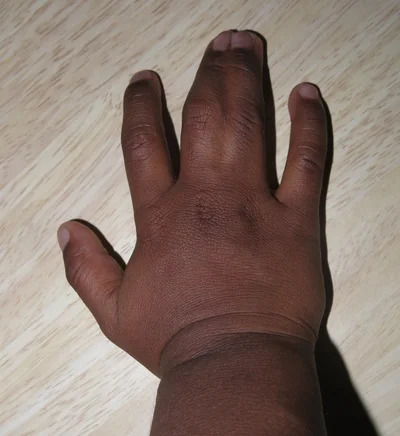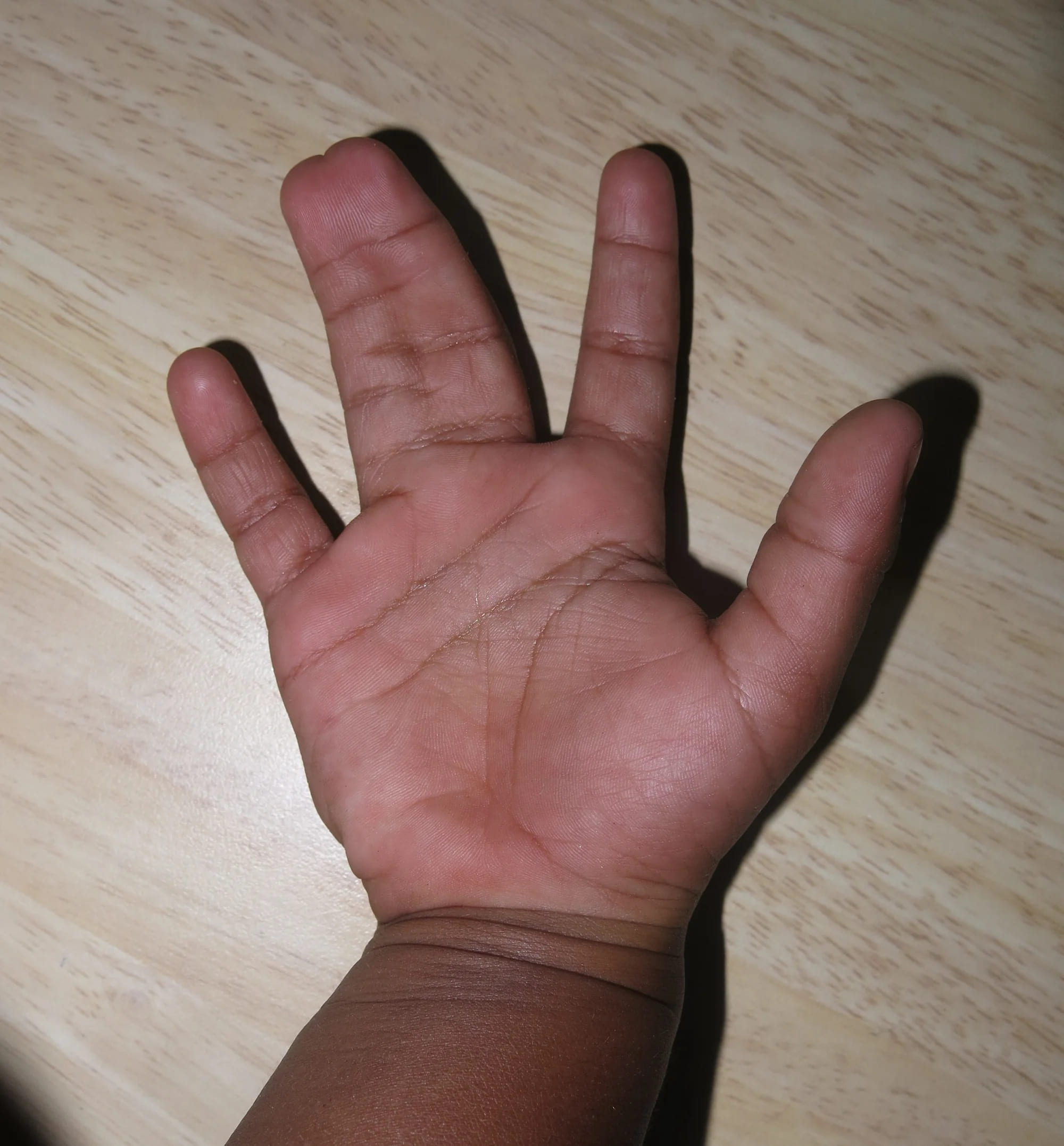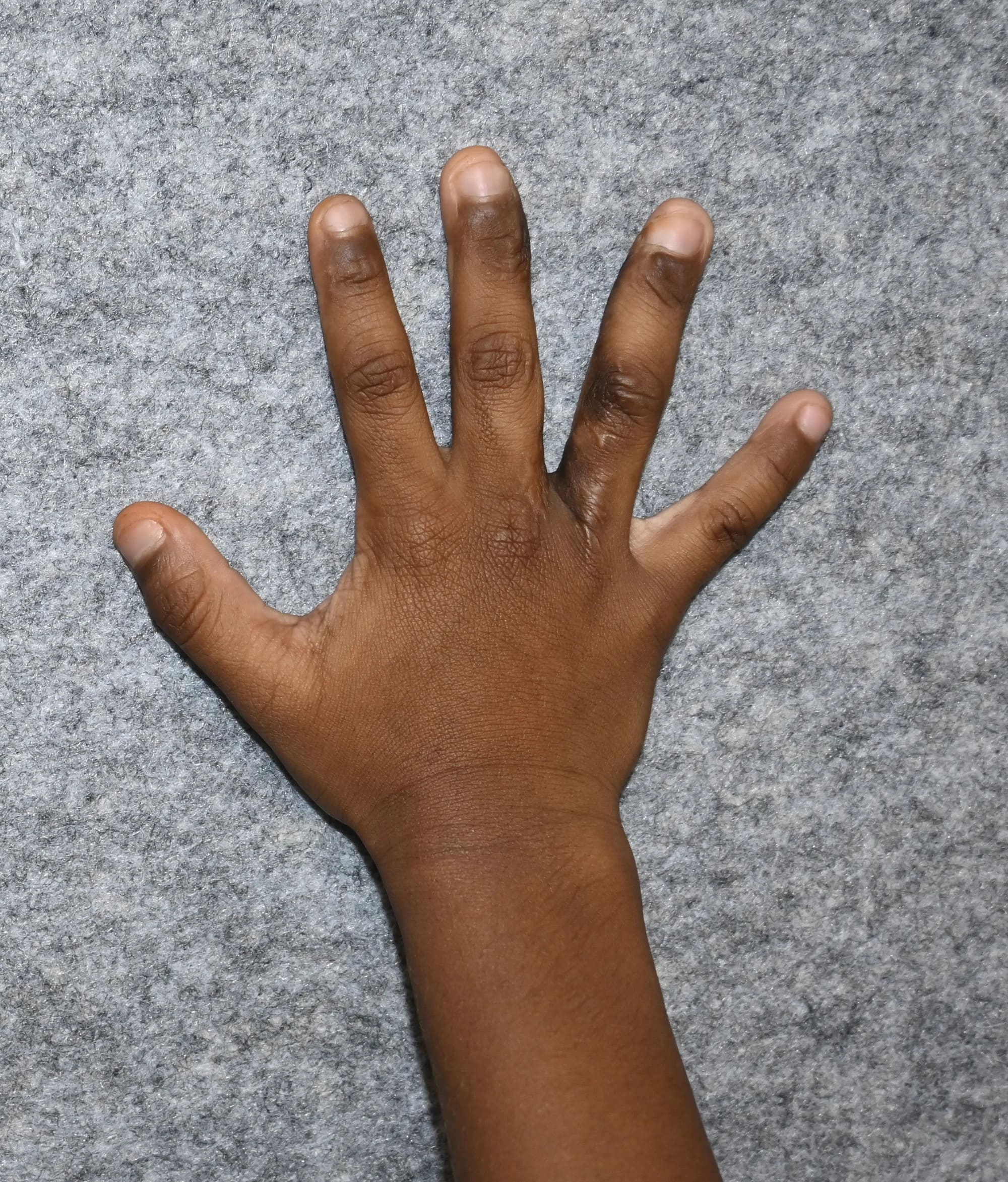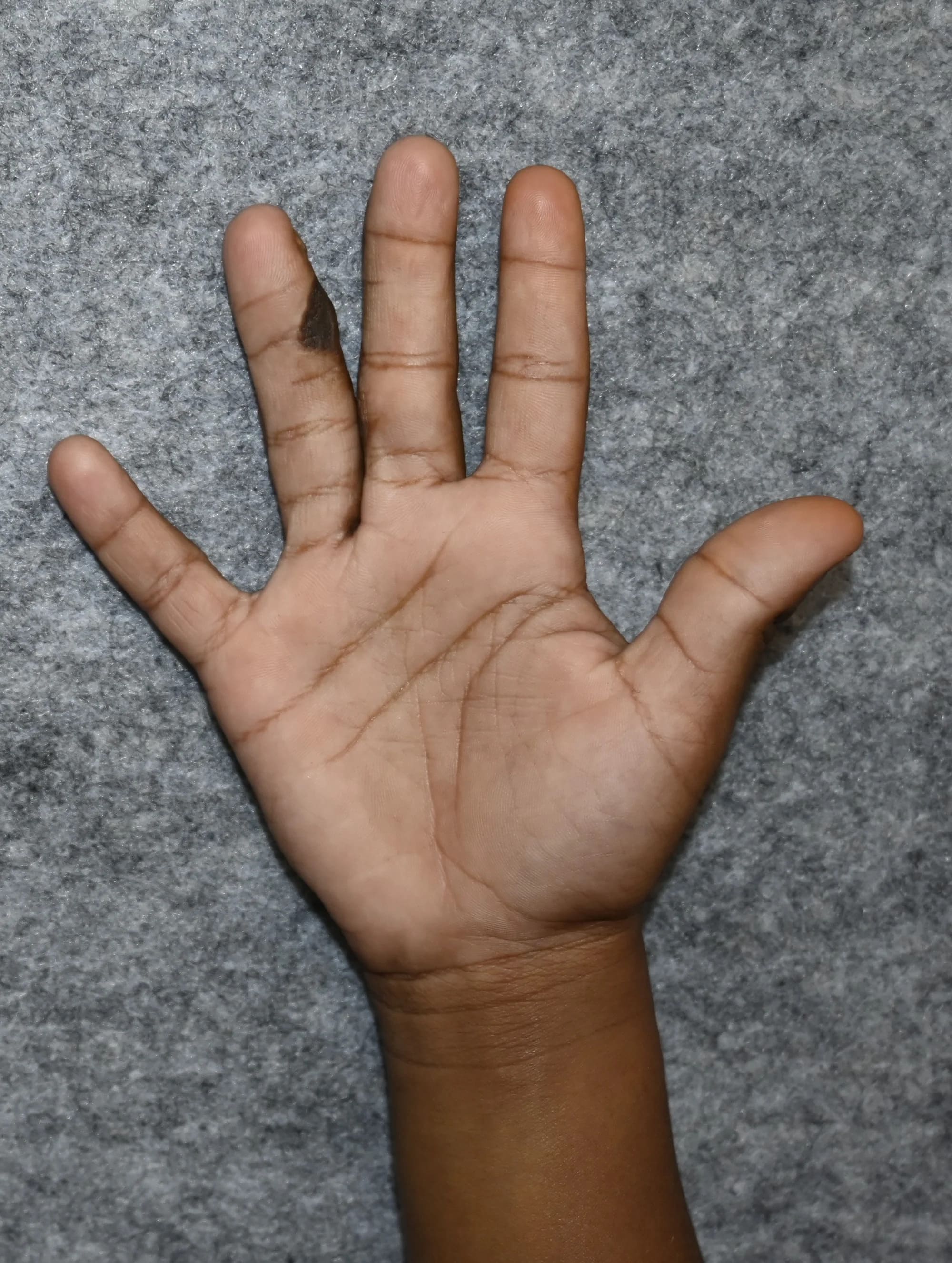Fused Fingers (Syndactyly)

What is Syndactyly ?
In syndactyly, the fingers are usually bound together with skin and soft tissue fusion. In some cases, bone fusion is also seen. Syndactyly can be isolated or associated with syndromes. Incidence is found to be one in 2000 births.


Before


After
Cause
The webbing occurs due to absence of the usual programmed cell death between the fingers leading to fused digits. This separation failure can occur in a sporadic fashion(spontaneously). However, a family history may be seen in 10-40% children.
Treatment
Surgical treatment is the only option to separate the fingers. Separation involves dorsal flap cover to create a web and full thickness skin graft harvested from the child's groin to cover the raw areas. In complex or complicated syndactylies, bony procedures may be required for correction.
Post-Operative Care
Post-operatively, the hand will be immobilised in an above elbow Plaster of Paris cast or slab. The child can go home on day 3 or 4 of surgery. The dressing will be changed under anesthesia, at 2 weeks from the date of surgery. The wounds will be inspected with suture removal. The dressing will be changed to a soft bulky one. At 3-4 weeks from surgery, once the grafts settle completely, we will start measures to prevent scarring and web creep in the form of scar massage and taping. The child will be encouraged to use the hand thereafter.





